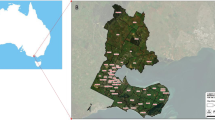Abstract
The technique of Hotspot Mapping is widely used in analysing the spatial characteristics of crimes. The spatial distribution of crime is considered to be related with a variety of socio-economic and crime opportunity factors. But existing methods usually focus on the target crime density as input without utilizing these related factors. In this study, we introduce a new crime hotspot mapping tool—Hotspot Optimization Tool (HOT). HOT is an application of spatial data miming to the field of hotspot mapping. The key component of HOT is the Geospatial Discriminative Patterns (GDPatterns) concept, which can capture the differences between two classes in a spatial dataset. Experiments are done using a real world dataset from a northeastern city in the United States and the pros and cons of utilizing related factors in hotspot mapping are discussed. Comparison studies with the Hot Spot Analysis tool implemented by Esri ArcMap 10.1 validate that HOT is capable of accurately mapping crime hotspots.








Similar content being viewed by others
References
Bailey TC, Gatrell AC (1995) Interactive spatial data analysis. Longman Scientific & Technical, Harlow
Bates S (1987) Spatial and temporal analysis of crime. Res Bull
Chainey S, Tompson L, Uhlig S (2008) The utility of hotspot mapping for predicting spatial patterns of crime. Secur J 21(1):4–28
Cohen LE, Felson M (1979) Social change and crime rate trends: a routine activity approach. Am Soc Rev 588–608
Cook W, Ormerod P, Cooper E (2004) Scaling behaviour in the number of criminal acts committed by individuals. J Stat Mech Theory Exp 2004:P07003
Ding W, Stepinski TF, Salazar J (2009) Discovery of geospatial discriminating patterns from remote sensing datasets. In: Proceedings of SIAM
Dong G, Li J (1999) Efficient mining of emerging patterns: discovering trends and differences. In: Proceedings of the 5th ACM SIGKDD. ACM, New York, pp 43–52
Eck JE, Chainey S, Cameron JG, Leitner M, Wilson RE (2005) Mapping crime: Understanding hot spots. National Institute of Justice
Gladwell M (2000) The tipping point: how little things can make a big difference. Little, Brown and Company, Boston
Harries KD (1999) Mapping crime: principle and practice. US Dept of Justice, Office of Justice Programs, Crime Mapping Research Center
Hirschfield A (2001) Mapping and analysing crime data: lessons from research and practice. CRC, Boca Raton
Jenks GF (1967) The data model concept in statistical mapping. Int Yearb Cartogr 7:186–190
Li J, Liu G, Wong L (2007) Mining statistically important equivalence classes and delta-discriminative emerging patterns. In: Proceedings of the 13th ACM SIGKDD. ACM, New York, pp 430–439
Mennis J, Guo D (2009) Spatial data mining and geographic knowledge discovery—an introduction. Comput Environ Urban Syst 33(6):403–408
Murray AT, McGuffog I, Western JS, Mullins P (2001) Exploratory spatial data analysis techniques for examining urban crime. Br J Criminol 41(2):309–329
Pasquier N, Bastide Y, Taouil R, Lakhal L (1999) Discovering frequent closed itemsets for association rules. In: ICDT ’99 proceedings of the 7th international conference on database theory, pp 398–416
Short MB, Bertozzi AL, Brantingham PJ (2010) Nonlinear patterns in urban crime: hotspots, bifurcations, and suppression. SIAM J Appl Dyn Syst 9:462
Skogan WG (1992) Disorder and decline: crime and the spiral of decay in American neighborhoods. University of California Press, Berkeley
Wand MP, Jones MC (1995) Kernel smoothing, vol 60. Chapman & Hall/CRC, Boca Raton
Acknowledgements
The work was partially funded by the National Institute of Justice (No. 2009-DE-BX-K219).
Author information
Authors and Affiliations
Corresponding author
Rights and permissions
About this article
Cite this article
Wang, D., Ding, W., Lo, H. et al. Crime hotspot mapping using the crime related factors—a spatial data mining approach. Appl Intell 39, 772–781 (2013). https://doi.org/10.1007/s10489-012-0400-x
Published:
Issue Date:
DOI: https://doi.org/10.1007/s10489-012-0400-x




